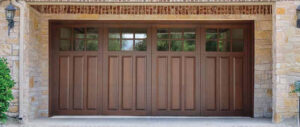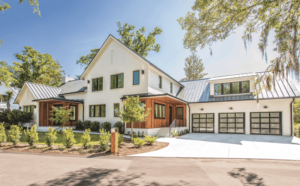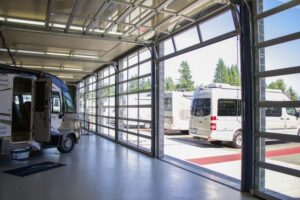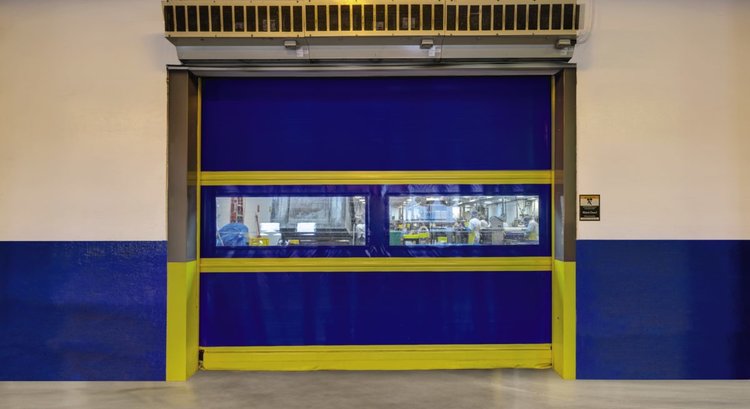Your garage door track is one of those parts you don’t think about—until something goes wrong. But this quiet little component does a big job. It’s the path your garage door rolls on, guiding it up and down safely every single time. When your garage door track is working like it should, everything moves smoothly. When it’s not, you might hear scraping, see gaps, or worse, find the door completely off track.
Let’s break it all down so you know what your garage door track does, what can go wrong, and how to keep it in good shape.
What Is a Garage Door Track?
The garage door track is the metal rail system attached to your garage walls and ceiling. It holds the rollers, which are connected to the garage door panels. These rollers slide up and down the tracks to open and close the door.
There are two main parts:
- Vertical Track: Mounted on either side of the door, this section guides the door upward when it opens.
- Horizontal Track: Extends from the top of the vertical track and runs along the ceiling, holding the door when it’s fully open.
Both sections work together to keep the garage door on track.
Some garage doors also include a curved transition track that links the vertical and horizontal sections. This curved part ensures the door glides around the bend without getting stuck or catching.
Why Is the Track So Important?
If your garage door isn’t on track, it won’t move properly—and could become a serious safety risk. A bent or misaligned track can jam the door, stress the opener, or even cause the door to fall off.
Here’s what a good garage door track helps with:
- Smooth, quiet movement
- Long-lasting parts (like rollers and springs)
- Proper balance of the garage door
- Reduced wear on the opener motor
- Safety for you, your family, and your car
A well-functioning garage door system relies on everything being in sync. The track helps ensure your door travels the right path, every time.
Signs Your Garage Door Track Needs Help
Garage door issues often show early warning signs. Here’s what to look for:
- Grinding or rubbing sounds when the door opens or closes
- The door looks crooked when opening or closing
- Rollers popping out of the track
- Visible bends, dents, or gaps in the metal
- The door gets stuck halfway or comes off track
- Gaps between the rollers and the track walls
Unusual vibrations or wobbling as the door moves
Common Causes of Track Problems
Garage door tracks can take a beating over time. Here are some of the most common reasons they get damaged:
- Accidental bumps: Hitting the track with your car or storage items can knock it out of alignment.
- Worn-out rollers: If rollers get stiff or broken, they put extra pressure on the track.
- Loose hardware: Bolts and screws can come loose from daily use and vibrations.
- Poor installation: If the track wasn’t properly aligned when first installed, it’ll always be prone to issues.
- Rust and moisture damage: In wet climates, rust can eat away at the track and cause it to warp.
Temperature changes: Extreme heat or cold can cause metal parts to expand and contract, loosening or twisting them.
Can You Fix a Garage Door Track Yourself?
Yes—and no. If it’s just a minor alignment issue or cleaning job, you might be able to tackle it safely. But if the track is bent, broken, or the rollers are popping out? That’s not a DIY moment.
Garage doors are heavy, and the spring systems are under high tension. One wrong move could lead to serious injury. That’s why it’s best to let trained professionals handle it.
What Happens When Your Garage Door Goes Off Track?
When your garage door jumps the track, it can cause all sorts of problems. Here’s what might happen:
- The door becomes stuck halfway open or closed.
- The opener keeps running, but the door doesn’t move.
- Panels bend or twist, causing long-term damage.
- The door slams shut, which can be dangerous.
- Excess strain on cables and springs, which may break.
If your door is off track, stop using it immediately. Trying to force it open or shut could make things worse—or even cause the entire system to collapse.
How We Fix Garage Door Track Issues
At OHD Company Bellingham, we’ve seen it all. From small bumps to full derailments, we know how to bring garage doors back on track—safely and quickly.
Our garage door track services include:
- Full system inspection
- Realigning tracks to their proper position
- Replacing bent or rusted track sections
- Tightening loose bolts and brackets
- Checking and replacing worn rollers
- Lubricating the track and moving parts
- Ensuring smooth door operation
Maintenance Tips to Keep Your Garage Door On Track
Want to prevent costly repairs? Routine garage door maintenance goes a long way.
Here are simple steps you can take:
- Clean the tracks regularly using a cloth or brush. Dirt and debris can block the rollers.
- Check for rust or corrosion. If you see orange spots, act fast.
- Tighten hardware. Make sure brackets and bolts are snug.
- Inspect the rollers. They should spin easily—no sticking.
- Test the door balance. Disconnect the opener and lift the door manually. It should stay up halfway. If not, the balance is off.
- Listen while the door moves. Grinding, popping, or thudding sounds aren’t normal.
A professional garage door tune-up once a year is a great way to catch issues early.
Types of Garage Door Tracks
Did you know there are different styles of garage door tracks? Depending on your space and the type of door, the track setup can vary.
Here are the main types:
- Standard Radius Track: The most common type, with a curved section that fits most garages.
- Low Headroom Track: Perfect for garages with limited ceiling clearance. Uses a tighter curve and different hardware.
- High-Lift Track: Great for garages with tall ceilings. Lifts the door higher before it moves back.
- Vertical Lift Track: Mostly used in commercial spaces, where the door lifts straight up and stays against the wall.
- Roof Pitch Track: Custom-built to follow the angle of your garage roof.
Choosing the right track system matters. It affects how your door moves and how much space you have inside.
Are garage door tracks universal?
No, garage door tracks are not universal. Different door sizes, models, and types require specific track styles and measurements.
Can you replace the track on a garage door?
Yes, garage door tracks can be replaced. It’s best to have a professional handle the job to ensure it’s done safely and correctly.
How much do garage door rails cost?
Garage door rails (or tracks) typically cost between $100 to $200 for parts alone, depending on the type and size. Labor can add extra costs.
What is the garage door track called?
The garage door track is usually just called a “track” or “garage door track,” and it includes both the vertical and horizontal sections that guide the rollers.
Your garage door is one of the largest and heaviest moving parts in your home. Don’t leave its safety and function up to chance. Whether your door is slightly off or completely derailed, we’ll handle it.
Here’s why folks in Bellingham trust us:
- Local, friendly experts who care
- Fast, reliable service
- Fully licensed and insured
- High-quality parts and repairs
Call OHD Company Bellingham today at (360) 734-5960 to schedule your garage door service.
Let’s keep your garage door rolling like it should!





